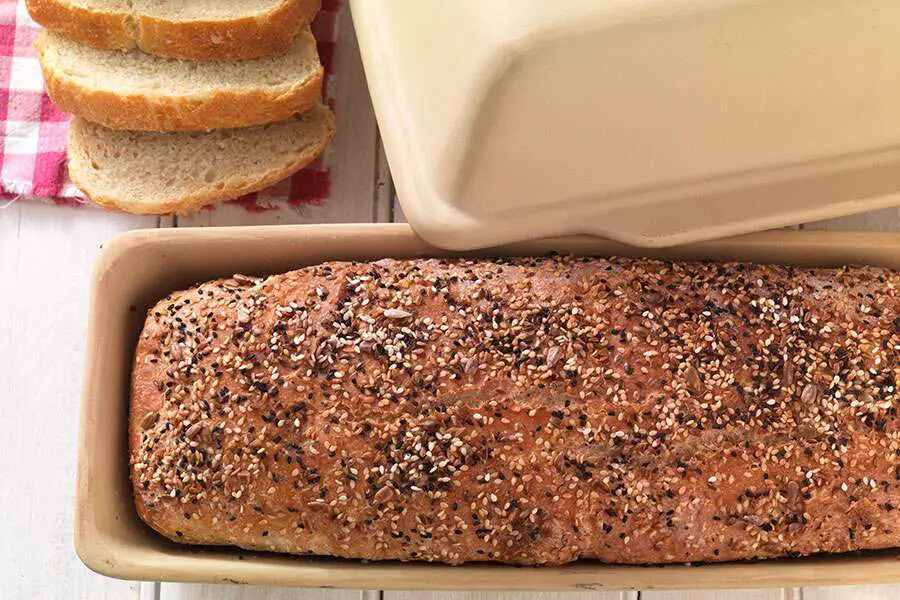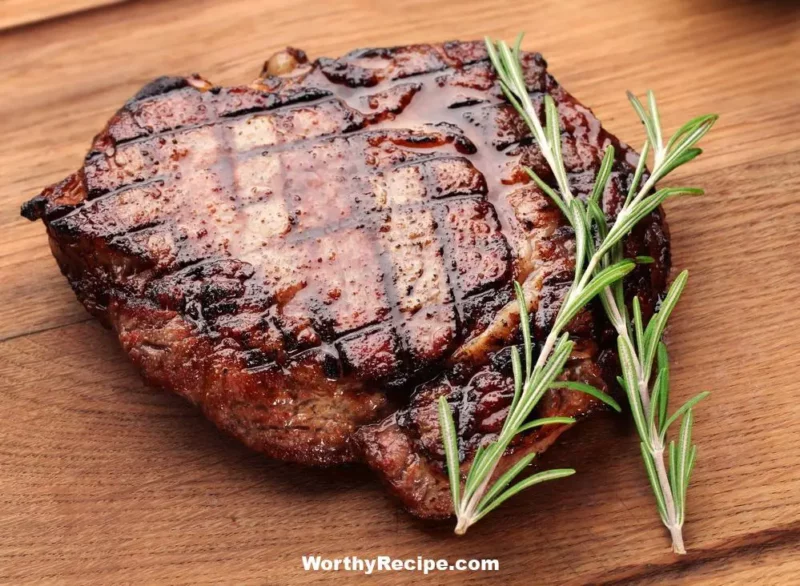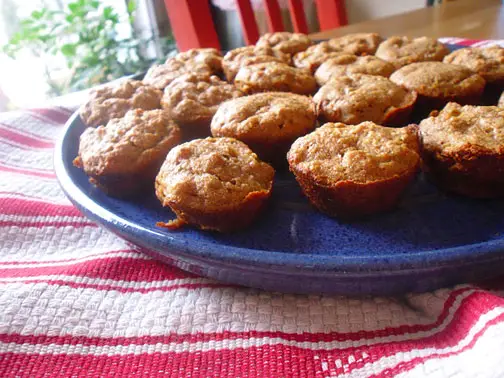Introduction
Baking bread has become a popular pastime for many people around the world, but choosing the right dish to bake it in can be a challenge. Ceramic dishes have become more common in recent years due to their benefits, but many still ask if it’s possible to bake bread in a ceramic dish. The answer is yes! In fact, using ceramic dishes for bread baking has numerous advantages. In this article, we’ll cover everything you need to know about using ceramic dishes to bake bread.
Why Use a Ceramic Dish for Baking Bread?
Ceramic dishes have several advantages when it comes to baking bread:
- Even heat distribution: Ceramic distributes heat evenly across the surface of the dish, which results in even baking.
- Retention of moisture: Ceramic holds onto moisture better than other dish materials, resulting in a perfectly moist loaf of bread.
- Reduction in sticking: Bread is less likely to stick to ceramic dishes compared to other baking vessels like metal or glass.
- Presentation advantages: Ceramic dishes provide an aesthetic charm that makes your freshly baked bread more presentable and enticing.
Types of Ceramic Dishes Used for Bread Baking
The three main categories of ceramic are terra cotta, stoneware, and porcelain. Each type has unique properties and benefits that make them suitable for different types of baking recipes.
- Terra Cotta: Terra cotta has a porous surface that absorbs excess moisture from the dough. This feature helps to prevent over-hydration of the bread dough, leading to better baking results.
- Stoneware: Stoneware is known for its durability and ability to retain heat. It also produces a crisp crust on bread thanks to its high-temperature resistance.
- Porcelain: Porcelain is a smooth, non-porous, and heat-resistant material that prevents sticking and offers even heat distribution.
Advantages and Disadvantages of Using Ceramic Dishes for Bread Baking
Ceramic dishes are ideal for baking bread but, like everything else, have pros and cons. Here are a few key points:
- Pros:
- Even browning: Ceramic dishes promote even browning all around the bread loaf.
- Texture preservation: Retention of moisture ensures that the texture of the bread remains consistent throughout the entire loaf.
- Sturdy construction: Unlike glass, ceramic dishes have solid construction that resists chipping or breakage.
- Cons:
- Slow heating time: Ceramic dishes may require more time to heat up than other materials, which may increase overall baking times.
- Poor heat conductivity: The poor heat conductivity of ceramics means it may not achieve uniform temperatures throughout the dish’s surface area.
- Higher cost than some other baking pans: compared to other bakeware options like metal or glass baking pans, ceramic dishes can be pricier.
How to Choose a Great Ceramic Dish for Your Bread Baking Needs
Selecting the right ceramic dish will help ensure optimal bread baking. When selecting one, there are certain factors to consider:
- Size, Shape, and Depth Requirements: The size, shape, and depth of the dish relate to the type of bread you intend to bake. Consider the thickness of crust you’d want on your loaf; deeper dishes produce lesser crust thickness while shallow dishes will give you a much thicker crust.
- Quality & Durability: Ceramic bakeware is constructed in a variety of ways based on its quality. Opt for trusted brands with high-quality products that come with guarantees.
- Brand Recognition & Consumer Reviews: Look for quality reviews from other consumers and user ratings on popular retail sites like Amazon or Insatgram to choose different varieties of ceramic dish options.
Tips for Care and Maintenance of Your Ceramic Dish
Caring for your ceramic baking dishes will keep them functioning optimally for years. Here are some tips for keeping your ceramic dishes looking fresh and functioning well:
- Cleaning Regularly with Soap-free Cleaners: wash your ceramic bakeware with lukewarm water immediately after use. Do not allow any food remnants to remain dry overnight as they’ll be difficult to clean later.
- Avoiding Exposure to High Temperatures or Temperature Changes: sudden temperature fluctuations can cause the ceramics to crack, so always wait for it cool down entirely before washing it.
- Avoiding Scratching, Chipping or Breaking: avoid using metal utensils on the surface of your ceramic dishes as they may scratch or leave behind marks.
Step-by-Step Guide on How to Bake Bread in a Ceramic Dish
This is a comprehensive guide for baking bread inside your ceramic dish to ensure perfect results:
- Preparing the Bread Dough: We assume here that you already have a prepared bread dough. Follow your recipe to prepare your dough.
- Preparing the Ceramic Dish: Apply some oil or non-stick cooking spray to your ceramic dish before placing the dough in it. This process will help to keep the dough from sticking onto the ceramic surface, which could damage the loaf’s structure.
- Putting the Dough into the Ceramic Dish: Gently transfer the dough into the oiled up ceramic baking dish and spread it out evenly with a spatula or wooden spoon. Be sure not to agitate or overhandle the dough too much to maintain its structure and prevent breakdowns.
- Baking the Bread Dough in the Ceramic Dish: Place the ceramic dish into a preheated oven, following your recipe’s instructions. Remember not to expose your ceramic dish to sudden temperature fluctuations that can cause it’s demise!
- Removing the Freshly Baked Loaf from the Dish: Carefully remove your hot baked loaf from the ceramics disk with oven mitts or gloves and place them onto a sturdy base before slicing and serving.
Recipe Ideas for Baking Bread in a Ceramic Dish
Below are three simple recipes you can try at home using your ceramic baking dish:
- Sourdough Loaf: Sourdough bread is a healthy, natural, and Tangy tasting bread that can be baked to perfection in a ceramic dish. Add a cup of levain, water, flour and salt into a mixing bowl and allow to sit so the dough can autolyse. Then put it in the prepared Dish to Prewarm your oven to 375° and Bake for 20 minutes then increase the temperature to 425° Bake for another 25-35 minutes until done.
- Whole Wheat Herb Bread: Whole wheat Herb bread is a nutrient-dense bread with savory herb flavors. To bake it in your ceramic dish; Mix chopped herbs, flour, salt, yeast, and sugar in a mixing bowl. Form the dough into an even Mix and place it into your oiled-up ceramic dish. Proof(Briefly leave it out) rounded cake covered with cling film for 45 mins on your kitchen top before baking at 400F for 45-50minutes or until done.
- Traditional White Bread Loaf: A Classic and always relishable white bread made using an effective yet simple recipe. Simply mix flour, yeast, salt-sugar in mixing bowl Form this mixture into a ball, knead it for like ten minutes before placing the Dough into the pre-oiled Ceramic Dish. Use clingfilm and cover lightly then leave to proof for about 30–40 mins while your oven preheats at 375°Fahrenheit . After 35-40 minutes of baking time remove from your oven let it cool down before slicing.
FAQs About Baking Bread in a Ceramic Dish
Here are some frequently asked questions to help clear up confusion about using ceramic dishes to bake bread:
- What is the correct temperature to use when baking bread in a ceramic dish? 350°F-400° Fahrenheit are good temperatures to use depending on the type of bread you are baking.
- Can I use my pottery or terracotta vase in place of a ceramic dish? It’s not specifically recommended to use vessel that were not originally designed for food and cooking purposes.
- Can I use an unglazed ceramic dish for bread baking? Unsealed ceramics may promote moisture absorption, which could produce undesired results like breakages when placed inside the hot oven. Always ensure that your ceramic dish is sealed and glazed before using it for baking bread.
Conclusion
Ceramic dishes offer several advantages for baking bread, like even heat distribution, retention of moisture, and reduction in sticking. They also have drawbacks like slow heating time and inadequate heat conductivity which may require longer baking times. However, overall, ceramic dishes remain an excellent investment for anyone interested in achieving perfect bread every time. Remember always to consider some factors when buying your ceramic piece like material types, size requirements, quality durability factors, brand recognition & consumer reviews. With these tips and obvious recipe ideas shared aboce , there’s no need to shy away from using ceramic dishes for bakery lovers!
Frequently Asked Questions
#### Can I bake bread in a ceramic dish?
Yes, baking bread in a ceramic dish is an excellent way to get a crisp crust on your loaf. It’s also a great option if you want to bake bread without using a traditional baking pan.
#### What types of ceramic dishes are suitable for baking bread?
Most ceramic dishes are suitable for baking bread, as long as they are oven-safe and can withstand high temperatures. Look for dishes that are specifically designed for baking, and make sure they have been approved for use in the oven.
#### Do I need to preheat my ceramic dish before baking bread?
Yes, it’s important to preheat your ceramic dish before baking bread. This will ensure that your loaf cooks evenly and develops a crispy crust. Preheat your dish in the oven at least 15-20 minutes before adding the dough.
#### How do I prevent my bread from sticking to the ceramic dish?
To prevent your bread from sticking to the ceramic dish, lightly coat the inside with cooking spray or butter. You can also dust the inside of the dish with flour or cornmeal before adding the dough. Additionally, be sure to let your bread cool completely before removing it from the dish to avoid any sticking.







